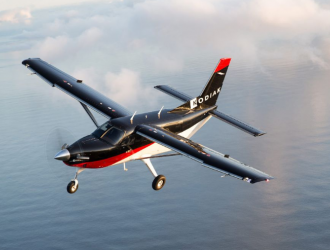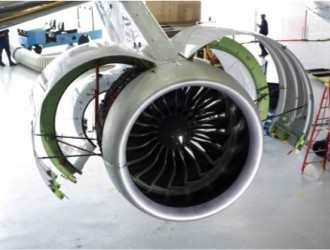The one of Chinese fighters that will be in the spotlight at this year’s show is the AVIC J-31; a developmental type that bears an uncanny resemblance to the F-35. Apparently powered by a pair of Klimov RD-93 engines, the same powerplant as used by the RAC MiG-29, the J-31 performed in the flying display at the 2014 show. The type’s maiden sortie had been covered by social media in 2012, but two years on, the flying display was very careful, with the pilot perhaps wary of pushing the envelope too far. At the AVIC stand in the show hall there was a large model of a type resembling the J-31, the FC-31. A plaque read “fourth-generation multipurpose medium fighter”.

Beijing has yet to develop a capability to produce its own advanced fighter jets
No other information was forthcoming, and AVIC representatives flatly declined to discuss the aircraft. But one year later, at the 2015 Dubai air show, AVIC was more forthcoming, briefing journalists with a surprising level of detail about the FC-31. It also gave the type a name, Gyrfalcon, and a promotion, upgrading it to fifth-generation status.
In the Dubai briefing, Gyrfalcon designer Lin Peng said the FC-31 is envisaged as a fighter with “multispectrum, low-observability characteristics.”
The Gyrfalcon will be capable of a range of missions, including offensive/defence counter-air, deep strike, suppression of enemy air defences, interdiction, close air support, and intelligence, surveillance and reconnaissance. In a video shown during the presentation, a squadron of FC-31s communicated with each other through secure datalinks. Another slide showed how the aircraft’s small radar cross section improves survivability in a high-intensity threat environment.
No specifics were given about the FC-31’s sensor suite or weapons, but AVIC says these and communications equipment can be tailored to customer requirements. The aircraft has six external hardpoints, with an internal weapons bay that can carry a further four munitions. Payload is 8,000kg (17,600lb), of which 2,000kg can be carried internally. Combat radius with internal weapons is 648nm (1,200km), and maximum take-off weight 25,000kg.
The first flight of a production example is planned for 2019, followed by initial operating capability in 2022 and final operating capability three years later.
During a brief question and answer session with journalists, it emerged that the FC-31 has yet to find a launch customer, although there are discussions with China’s air force. Executives also declined to name the engines that power the J-31, or the planned FC-31.
Crucially, the FC-31’s first flight in 2019 is contingent on securing a “well-funded” customer, says AVIC. Suffice to say that interest in the FC-31’s progress will be high at Zhuhai this year. AVIC has said that the J-31 will put in a second appearance at this year’s event.
“For now it is difficult to assess the latter two new-generation fighters, with the J-20 not going into full-scale production until 2018 and little known about the subsystems on the J-31,” says Forecast International analyst Dan Darling.





